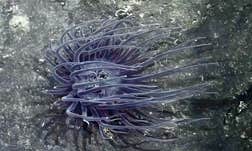Suppose you wanted to build the perfect dog from scratch. What would be the key ingredients in the recipe? Loyalty and smarts would be musts. Cuteness would be as well, perhaps with gentle eyes, and a curly, bushy tail that wags in joy in anticipation of your appearance. And you might toss in a mutt-like mottled fur that seems to say, “I may not be beautiful, but you know that I love you and I need you.”
You needn’t bother trying. Lyudmila Trut and Dmitri Belyaev have already built it for you. The perfect dog. Except it’s not a dog, it’s a fox. A domesticated one. They built it quickly—mind-bogglingly fast for constructing a brand new biological creature. It took them less than 60 years, a blink of an eye compared to the time it took for wolves to become dogs. They built it in the often unbearable negative 40 degrees Fahrenheit cold of Siberia, where Lyudmila and, before her, Dmitri, have been running one of the longest, most incredible experiments on behavior and evolution ever devised.
Let us travel back to 1974. One clear, crisp spring morning, with the sun shining on the winter snow, Lyudmila moved into a little house on the edge of an experimental fox farm in Novosibirsk, Siberia, with an extraordinary little fox named Pushinka. Pushinka was a beautiful female with piercing black eyes, silver-tipped black fur, and a swatch of white running along her left cheek. She had recently passed her first birthday, and her tame behavior and dog-like ways of showing affection made her beloved by all at the fox farm. Lyudmila and her fellow scientist and mentor Dmitri Belyaev had decided that it was time to see whether Pushinka was so domesticated that she would be comfortable making the great leap to becoming truly domestic. Could this little fox actually live with people in a home?
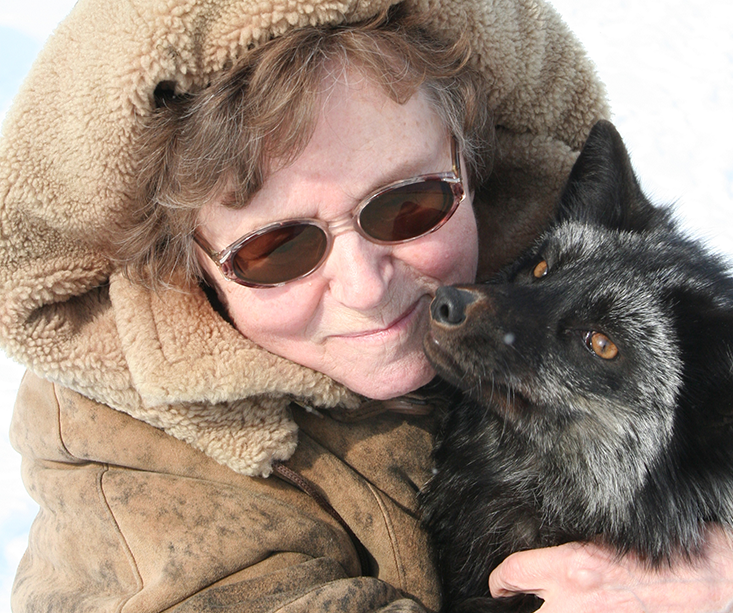
Dmitri Belyaev was a visionary scientist, a geneticist working in Russia’s vitally important commercial fur industry. Research in genetics was strictly prohibited at the time Belyaev began his career, and he had accepted his post in fur breeding because he could carry out studies under the cover of that work. Twenty-two years before Pushinka was born, he had launched an experiment that was unprecedented in the study of animal behavior. He began to breed tame foxes. He wanted to mimic the domestication of the wolf into the dog, with the silver fox, which is a close genetic cousin of the wolf, as a stand-in. If he could turn a fox into a dog-like animal, he might solve the long-standing riddle of how domestication comes about. Perhaps he would even discover important insights about human evolution; after all, we are, essentially, domesticated apes.
Fossils could provide clues about when and where the domestication of species had occurred, and a rough sense of the stages of change in the animals along the way. But they couldn’t explain how domestication got started in the first place. How had fierce wild animals, intensely averse to human contact, become docile enough for our human ancestors to have started breeding them? How had our own formidable wild ancestors started on the transition to being human? An experiment in real-time, to breed the wild out of an animal by mating the tamest among them, might provide the answers.
By far the most intense affection and loyalty forms between owners and dogs.
Belyaev’s plan for the experiment was audacious. The domestication of a species was thought to happen gradually, over thousands of years. How could he expect any significant results, even if the experiment ran for decades? And yet, here was a fox like Pushinka, who was so much like a dog that she came when her name was called and could be let out on the farm without a leash. She followed the workers around as they did their chores, and she loved going for walks with Lyudmila along the quiet country road that ran by the farm on the outskirts of Novosibirsk. And Pushinka was just one of the hundreds of affectionate foxes they had bred for tameness.
By moving into the house on the edge of the farm with Pushinka, Lyudmila was taking the fox experiment into unprecedented terrain. Their 15 years of genetic selection for tameness in their foxes had clearly paid off. Now, she and Belyaev wanted to discover whether by living with Lyudmila, Pushinka would develop the special bond with her that dogs have with their people. Except for house pets, most domesticated animals do not form close relationships with humans, and by far the most intense affection and loyalty forms between owners and dogs. What made the difference? Had that deep human-animal bond developed over a long time? Or might this affinity for people be a change that could emerge quickly, as with so many other changes Lyudmila and Belyaev had seen in the foxes already? Would living with a human come naturally to a fox that had been bred for tameness?
When Belyaev began the fox experiment, nearly nothing about the process of domestication was known. Why had so few animal species of the millions on the planet had become domesticated—only a few dozen in all? Most were mammals, but also a few species of fish and birds, and a few insects, including the silk moth and the honeybee. Then there was the question of why so many of the changes that had taken place in domesticated mammals were so similar. As Darwin had noted, most of them developed patches of different coloring in their fur and on their hides—spots, patches, blazes, and other markings. Many also retained physical characteristics from childhood well into their adulthood that their wild cousins outgrew, such as floppy ears, curly tails, and babyish faces—referred to as the neotenic features—that make young animals of so many species so adorable. Why would these characteristics have been selected for by breeders? Farmers raising cows, after all, had nothing to gain from their cows having black-and-white spotted hides. Why would pig farmers have cared whether their pigs had curly tails?
Another commonality among domesticated animals concerns their mating abilities. All wild mammals breed within a particular window of time each year, and only once a year. For some, that window is as narrow as a few days and for others it’s weeks or even months. Wolves, for example, breed between January and March. The window for foxes is from January to late February. This time of year corresponds to the optimal conditions for survival; the young are born when the temperature, the amount of light, and the abundance of food offer them the best odds for a successful launch into the world. With many domesticated species, by contrast, mating can occur any time during the year and for many, more than once. Why had domestication led to such a profound change in the reproductive biology of animals?
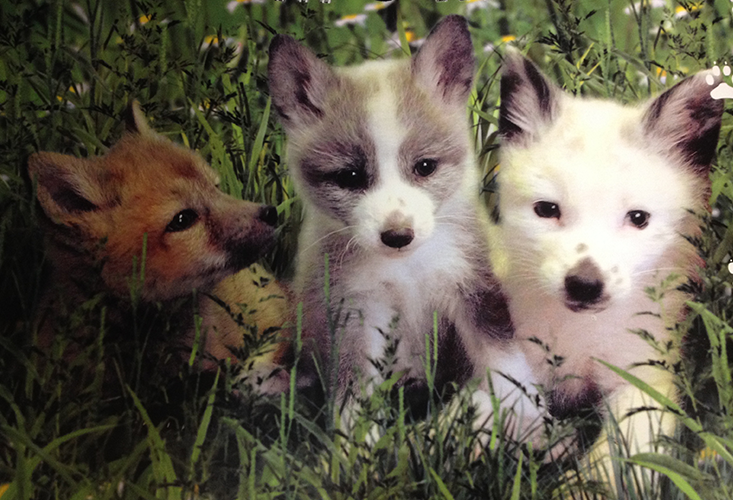
One longstanding idea about wolf domestication was that humans had adopted wolf pups, perhaps choosing ones that were especially cute, with the most juvenile facial and body features. But what if it were the wolves that initiated contact, not the humans? Naturally more adventurous when it comes to humans, tamer wolves might have begun making their way into human encampments to scavenge for food. Maybe, given that they’re nocturnal, they snuck into campsites in the night as our early ancestors slept. Or perhaps they had learned to closely follow human hunting parties to scavenge for prey. It’s easy to understand why wolves who were relatively comfortable with human presence—naturally semi-tame—would have done so. Humans were a much more reliable food source than the wild. But why had early human groups accepted the wolves into their inner sanctums? Wolves on their way to becoming dogs might well have helped with hunting and acted as sentinels, warning of approaching dangers. But there must have been earlier stages of their transition before they were performing these functions particularly well. If the process of the silver foxes’ domestication really was mimicking that of wolf domestication, then perhaps these same lovable solicitous behaviors emerged early on in wolves also. And maybe that made them more appealing to our early ancestors.
But what would have driven the emergence of these behavioral changes in the wolves? Lyudmila was actively selecting the tamest foxes for mating. Is it plausible to believe that early humans would have actively mated wolves in a similar way? Perhaps they wouldn’t have needed to. Natural selection would likely have favored the wolves who had gained access to such a reliable, human-based food source. The wolves that were friendlier to humans might have found themselves living in close proximity with other such friendlier wolves who were hanging around humans, and they might have selected their own, semi-tame, kind as mates. That would have created the radically new selection pressure for tameness that the fox experiment was applying. And as Lyudmila and Belyaev were seeing with the foxes, this new selection pressure favoring tameness might have been enough to trigger the kinds of changes they were seeing in their tamest foxes. The process would have taken way longer than with Lyudmila’s artificial selection—as, indeed, it’s thought to have with wolves—but the same essential force might have been at play.
One day in May of 1967, after Dmitri had poured through Lyudmila’s data from their seventh generation of foxes, he excitedly called her into his office. He told her he hadn’t slept at all the night before because his mind had been racing. He had an idea about what was causing the changes in the foxes, and he asked her to gather a number of their colleagues in his office. Once they had settled in, Belyaev told them, “My friends, I think I have come close to understanding what we are observing in the domestication experiment.”
Belyaev had realized that most of the changes they’d seen in the foxes involved changes in the timing of when traits turn on and off. Many of the changes they were observing in the tamer foxes involved retaining a juvenile trait longer than normal. The whimpering was a youthful behavior that normally stopped as foxes matured. So was calmness; fox pups are serenely calm when they’re first born, but as they age, foxes typically become quite high-strung. A change in timing was also going on with some of the females’ reproduction systems. Their readiness for mating was occurring much earlier and was lasting considerably longer.
Hormones were known to be involved in regulating the timing of development and of the reproductive system. They were also known to regulate the levels of an animal’s stress, or calmness. Dmitri felt sure that changes in the production of hormones were unfolding in the tame foxes and that this must be central to the process of domestication. If this were true, it could explain why domesticated animals look more juvenile than their wild cousins, as well as why they can reproduce outside of the normal mating time, and why they are so calm around us.
The discovery of hormones back at the dawn of the 20th century had shaken the foundation of animal biology. The basic operation of the nervous system was just starting to be pieced together at that time, and the brain and the nervous system were thought to be the communication system that regulated animal behavior. Then, suddenly, it seemed as if our bodies were also controlled by a chemical messaging system, which operated through the bloodstream, not through the nerves. The first hormone discovered was secretin, which was involved with digestion. Shortly thereafter adrenaline was identified, given that name because it was created by one of the adrenal glands (it’s also called epinephrine). More and more hormones were steadily discovered. On Christmas Day in 1914, thyroxin—a hormone produced by the thyroid—was identified, and in the 1920s and ’30s, testosterone, estrogen, and progesterone and their roles in regulating reproductive activity were discovered. Over time research showed that changes in the levels of these hormones could dramatically interfere with the normal reproductive cycles, ultimately leading to the creation of the birth control pill, which hit the market in 1957.
Two other adrenal gland hormones, cortisone and cortisol, were identified in the mid 1940s, and along with adrenaline, they were dubbed the stress hormones, because they all regulate levels of stress. Levels of adrenaline and cortisol were found to rapidly ramp up in response to perceived danger, key to the “fight or flight” response. In 1958, the isolation of another hormone, melatonin, was announced. This hormone was produced by the pineal gland, and in addition to affecting the pigmentation of skin, it played a vital role in regulating sleep patterns as well as the timing of reproductive cycles.
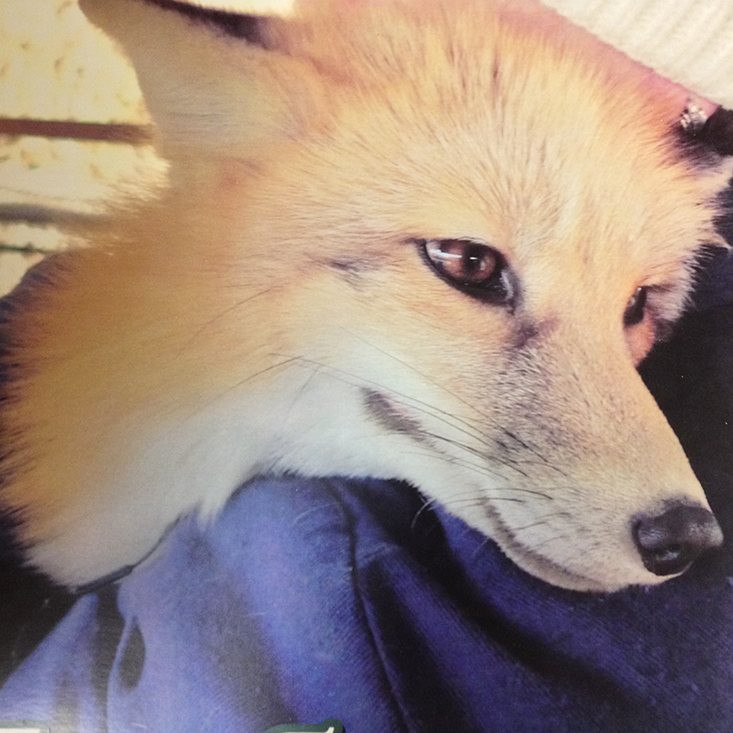
Research had also shown that rarely, if ever, does a hormone have a single effect on an organism. Most hormones affect a suite of different morphological and behavioral characteristics. Testosterone, for example, is involved not just in the development of the testis, but in aggressive behavior, as well as in the development of muscles, bone mass, body hair, and many other traits.
Dmitri had studied the literature on hormones and he knew that research had shown hormone production was somehow, though exactly how was not clear, regulated by genes. He thought the genes or combinations of genes that regulated hormone production might be responsible for many—maybe all—of the changes they were seeing in the tame foxes. The selection for tameness had triggered changes in the ways those genes were operating. Natural selection had stabilized the hormonal recipe for building a fox and its behavior in the wild. Now the selection for tameness that he and Lyudmila were imposing was destabilizing that formula.
Why, Dmitri wondered, would that be happening? The stabilization of an animal’s behavior and physiology was suited specifically to its environment. Animals’ mating seasons had been selected to coincide with the time of year when food and daylight were most favorable for the survival of young ones. Their coat coloring was optimized to camouflage them in their natural environment. Their production of stress hormones was optimized to cause them to either fight or flee from the dangers of their environment. But, what if they were suddenly transported to a radically different environment, one with different conditions for survival? That’s what had been done with the foxes; their environment was now one in which being tame around humans was optimal. So the stabilization of their behavior and physiology that had been the result of natural selection in the wild was no longer the best formula, and adjustments had to be made. And Dmitri thought that under such pressure to change, the activity patterns of an animal’s genes—the ways in which they regulated body functioning—might be dramatically altered. A cascade of changes might be unleashed. And it made sense that key among these would be regulatory, timing, changes in the production of the hormones that played such a vital role in optimizing an animal to its environment. Later he would come to add changes to the nervous system to his formula as well. He called the process he was describing destabilizing selection.
In animal research at the time, one of the biggest debates centered on the relative importance of innate versus learned behavior. Particularly vehement controversy had erupted over the work of primatologist Jane Goodall, who made astonishing observations of chimpanzees at the Gombe Reserve in Tanzania, on the east coast of Africa. Goodall’s reports on the nature of chimp society, and how human-like so much of their behavior was, had captivated the public from early on. In her book In the Shadow of Man, she wrote captivating descriptions of the close-knit nature of chimp communities: “I saw one female, newly arrived in a group, hurry up to a big male and hold her hand toward him. Almost regally he reached out, clasped her hand in his, drew it toward him, and kissed it with his lips. I saw two adult males embrace each other in greeting.” The young chimps seemed to revel in their daily camaraderie with “wild games through the treetops, chasing around after each other or jumping again and again, one after the other, from a branch to a springy bough below.”
Goodall argued that individuals in groups displayed distinctive personalities, and that while mother-child bonds were the most powerful, strong social ties bound not only members of immediate families, but also larger groupings. Chimps seemed to genuinely care about members of their groups. They shared food, and came to the aid of one another when necessary. To her horror, as she continued to observe the chimps in the mid 1970s, she also observed acts of extreme violence, watching more dominant females kill the offspring of other females in a group, as well as group killings by males, which sometimes even ended in them eating the group member they had killed. That animals would kill one of their own in such a strategic manner had also been considered a uniquely human characteristic. It wasn’t, and that was disappointing to Goodall. “When I first started at Gombe,” she wrote many years later, “I thought the chimps were nicer than we are. But time has revealed that they are not. They can be just as awful.”
The seemingly human-like behavior of the chimps suggested to Goodall, and many others, that they had higher order thinking abilities, and more human-like emotions, than primatologists had thought. This was fueling new speculation about the nature of animal minds and how sophisticated some animal thinking, and learning, might be. The work also stirred up new ideas about how much more like our primate ancestors we humans might still be. But some ethologists thought Goodall had gone way too far in her conjectures about the chimp mind. They argued that she was anthropomorphizing, projecting human qualities onto the chimps that they didn’t really have.
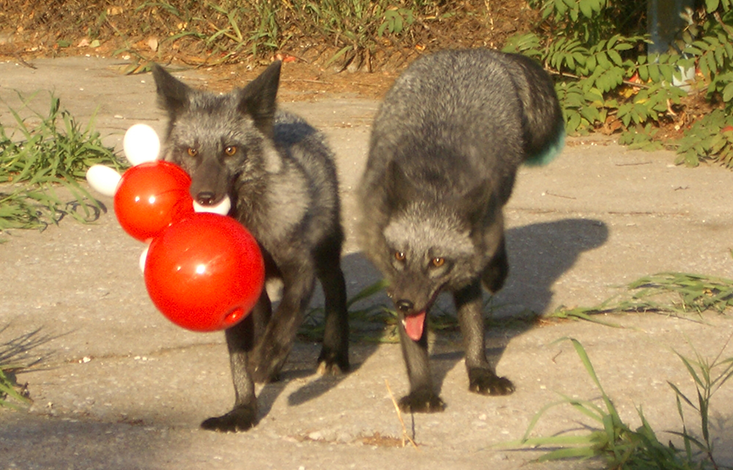
At the fox farm, Lydumila and Dmitri were equipped to investigate the ways that innate traits and learning might be affecting their tame foxes. They were constantly availing themselves of the latest techniques for research, and during the time Lyudmila was living at Pushinka’s house, she and Dmitri decided to see whether they could delve even deeper into what degree the behaviors they were seeing in the elite foxes were genetically based.
Even as they tried to hold all conditions constant for the foxes, there were subtle, almost imperceptible differences that could creep into an experiment. For instance, what if the tamest mothers treated their pups differently than the aggressive moms treated their pups? Maybe pups learned something about how to be tame or aggressive toward humans from the way their moms treated them?
There was only one way to confirm for certain that the behavioral differences they were seeing between the tame and aggressive foxes were due to genetic differences. Dmitri and Lyudmila would have to try what is known as “cross-fostering.” They’d have to take developing embryos from tame mothers and transplant them into the wombs of aggressive females. Then they would let the aggressive foster mothers give birth and raise those pups. If the pups turned out tame themselves, despite having aggressive foster moms, then Lyudmila and Dmitri would know that tameness was fundamentally genetic and not learned. And, for completeness, they would also do the same experiment with the pups of aggressive mothers transplanted into tame mothers to see if they got parallel results.
In principle, cross-fostering was straightforward; researchers had used the procedure to examine the role of nature versus nurture for many years. But in practice it was easier said than done, it was technically difficult to pull off, and it had worked much better with some species than others. No one had ever tried to transplant fox embryos. Then again, no one had tried lots of things they had done, and so Lyudmila decided she would have to learn this delicate procedure on her own.
Her foster tame offspring were barely walking but they were already rushing to the cage doors, if there was a human standing by, and wagging their tails.
She would be transplanting tiny, delicate embryos—on the order of 8 days old—from the womb of one female into the womb of another pregnant female. Embryos from tame mothers would be transplanted into the wombs of aggressive mothers, and those of aggressive mothers would be transplanted into the wombs of tame mothers. When the pups were born seven weeks later, she would closely observe their behavior to see if the pups of tame mothers became aggressive and if the pups of aggressive mothers became tame. But how in heaven’s name was she going to know which pups in a litter were the genetic offspring of the mother and which pups were the ones she had transplanted? Without that information, the experiment was futile. She realized that the foxes had their own unique color-coding system. Coat color is a genetic trait, so if she carefully selected the males and females so that the coat coloring of their offspring would be predictable, and the pups of the aggressive mothers would have different colors from those of the tame mothers, she’d be able to tell which pups were the genetic offspring of a female, and which had been transplanted.
Each surgery involved two females, one tame and one aggressive, each about a week into pregnancy. After lightly anesthetizing the foxes, Lyudmila made a tiny surgical incision in each female’s abdomen and located the uterus, with its right and left “horn,” each of which had embryos implanted in it. She then removed the embryos from one uterine horn and left the embryos in the other. Then she repeated the procedure with the second female. She transplanted the embryos that had been removed from one mother into the other in a drop of nutritional liquid that was placed into the tip of a pipette. “The embryos,” Lyudmila recalls, “stayed outside the uterus [at room temperature from 64 to 68 degrees Fahrenheit] for no more than 5 to 6 minutes.” The females were then moved to a postoperative room and given time to recover.
Everyone at the institute anxiously awaited the results. Even with the surgeries having gone so well, the transplanted embryos might not survive. Their wait paid off. It was the caretakers who were the first to discover the births of the first litters, which was often the case with new developments with the foxes. They sent word right away to the institute. “It was like a miracle,” Lyudmila recorded. “All the workers gathered around the cages for a party with wine.”
Lyudmila and Tamara began recording the pups’ behavior as soon as they left their nests and began interacting with humans. One day Lyudmila watched as an aggressive female was parading around with her genetic and foster pups. “It was fascinating,” Lyudmila recalls, “… the aggressive mother had both tame and aggressive offspring. Her foster tame offspring were barely walking but they were already rushing to the cage doors, if there was a human standing by, and wagging their tails.” And Lyudmila wasn’t the only one fascinated. The mother foxes were as well. “The aggressive mothers were punishing tame pups for such improper behavior,” Lyudmila recalls. “They growled at them and grabbed their neck, throwing them back in the nest.” The genetic offspring of the aggressive mothers did not show curiosity about people. They, like their mothers, disliked humans. “The aggressive pups on the other hand retained their dignity,” Lyudmila remembers. “They growled aggressively, same as their mothers, and ran to their nests.” This pattern was repeated over and over. Pups behaved like their genetic mothers, not their foster mothers. There was no longer any doubt—basic tameness and aggression toward humans were, in part, genetic traits.
The cross-fostering genetics experiment combined with the rapid development of the close bond between Lyudmila and Pushinka was like the evolution of the human-dog relationship being accelerated to warp speed. That the artificial selection for tameness could catalyze such a profound change in an animal’s behavior, from the natural inclination to live as a loner in adulthood to forming such strong attachment, and with an animal from another species no less, is remarkable. How quickly this same change came about in wolves is impossible to know, but both genetic and archeological evidence suggests that a deeper bond than we developed with any other animal formed between us and wolves, or wolf-like proto-dogs, at least thousands of years ago, and perhaps tens of thousands of years ago. So close has the relationship been for so long that some experts argue that our two species co-evolved, meaning that we acquired genetic adaptations to living with one another. Life with dogs, it seems, has been bred in our DNA, and life with humans has been bred into theirs.
A powerful testament to how far back in time the human-dog bond developed, and how strong it quickly became, is the wealth of ancient dog burials that have been discovered all over the world. Many of our prehistoric ancestors buried their dogs in graves just like the ones in which they buried their human loved ones, and sometimes in the same grave with their human masters. In fact, they began doing so right from the time dogs are generally thought to have been first fully domesticated, about 14,000 to 15,000 years ago.
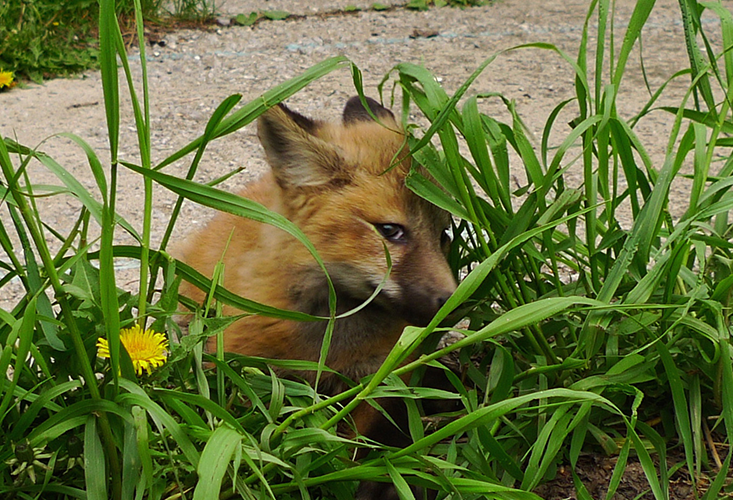
A number of recent archeological finds suggest that dogs and humans have lived together for many thousands of years longer than was previously thought, and some intriguing new findings in genetics suggest that in the course of our long time together, we became increasingly good for each other’s well-being. Perhaps the most evocative of the archeological finds is a set of fossilized footprints on the floor of Chauvet cave in France, famed for its elaborate wall paintings of fierce predators, including lions, panthers, and bears, which date to approximately 26,000 years ago. Alongside a trail of prints left by a boy, estimated to have been about 10 years old, run another set of prints, those of a large canid animal, and the prints suggest that this may have been an animal more like a dog than a wolf. A still earlier date for the presence of dogs, or dog-like ancestors, in our lives has been suggested on the basis of a dog-like skull found at another cave, in Belgium, which dates to approximately 31,700 years ago.
As we lived together for so many eons, through so many changes in our environment and lifestyle, with humans developing from hunter-gatherers, to farmers, to urban dwellers, and our dogs coming along with us on the journey, our genomes adapted in complex and similar ways, both to each other and to the environment. For example, genetic adaptations similar to those in the human genome that allowed our ancestors to begin eating starchy foods, like the wheat, barley, and rice they domesticated, also appear in the dog genome, and they allowed dogs to eat these foods as well, perhaps first having scavenged them from our ancestors’ fields or stockpiles, and later being fed them. Wolves, who eat a meat-heavy diet, don’t have the complex genetic machinery to eat these grains.
Life with dogs, it seems, has been bred in our DNA, and life with humans has been bred into theirs.
That we adapted specifically to life with one another is also attested to by a number of positive effects we have on each other. Many studies have shown that living with dogs has many beneficial physical and psychological effects on us, such as lowering our blood pressure and rates of heart disease, as well as the frequency with which we go to doctors, and increasing our general sociability, while also helping us fight off depression. Recent work on the neurotransmitter oxytocin confirms what every dog owner already knows—that we and our dogs genuinely enjoy each other’s company. Both sides feed off it in a positive feedback loop, in a kind of feel-good snowball of mutual reinforcement.
Researchers have known for more than four decades that oxytocin is fundamental in the bonding between human mothers and their children (as well as in nonhuman mother-child bonds). More recent work has found that when a human mother and her newborn engage in mutual gazing, oxytocin levels in the mom rise, and the newborn’s oxytocin system kicks into high gear. This leads to more gazing from the infant, which again increases the mother’s oxytocin level. When this work was published in 2014, we already knew something about the role that oxytocin plays in dog-owner interactions: When we pet our dogs, oxytocin levels rise in both us and them. But now we know even more: A 2015 study has shown that the mother-child oxytocin loop that turns on as a result of human mutual gazes is also at play with owners and their dogs. This study found that when dogs and owners simply gaze at one another, oxytocin levels go up in both. This leads to increased petting and more oxytocin in response to that petting, in a chemical lovefest. What’s more, if you spray oxytocin up a dog’s nose, and researchers do, it gazes longer at its owner, setting off another lovefest. None of this happens when you replace dogs with wolves in this experiment.
These biological effects dogs and their humans have on one another are brought about by changes in the genes that control the production of hormones and neurochemicals in our systems. They constitute additional strong support for Dmitri Belyaev’s theory that selection for tameness would unleash a cascade of changes in the production of the chemicals that regulate bodily functions. Dmitri had emphasized changes in the production of hormones in his theory at the start, because much less was understood about neurochemicals, like oxytocin, when he first formulated his theory. As research in the 1970s began revealing the powerful role they play in regulating an animal’s behavior, particularly illuminating their effects on how happy or depressed an animal is, Dmitri realized that they might also be integral to the changes brought about by destabilizing selection. The rapidly emerging understanding of how sensitive animal behavior is to changes in the levels of these chemicals coursing through our brains and throughout our bodies helped to explain why the behavior of the tame foxes had changed so rapidly, and why Lyudmila and Pushinka had developed such a strong bond.
What exactly is the nature of animals’ mental lives? We don’t really know. The most difficult questions to answer about animal behavior have been those about the nature of animal minds and emotion. Darwin had conjectured that animal cognition and emotion are on a continuum with that of humans. But Jane Goodall’s assertions about chimpanzees had kicked up such a storm over inferences about animals’ inner lives that the bar of proof was now set very high. However, Goodall’s observations, along with the observations of other animal behaviorists, had also stirred up interest in finding new ways to probe into the nature of the animal mind.
The animal cognition scientist Brian Hare has contributed important findings about animal social cognition through his studies on dogs and primates. Research had shown that on one classic social intelligence test—what is known as the object choice test—dogs performed better than chimps. Researchers had found that if they placed two opaque containers on a table, and then, unknown to the chimp, put food under one, it was very difficult to provide a chimp with a visual cue that it could use to figure out where the food was. You could point at the correct container, stare at it, touch it, or even place a marker like a wooden block on it, and chimps just don’t get it: They are no more likely to choose the container with food than the one without it. Dogs, on the other hand, are virtual geniuses at this sort of object choice task, and are able to cue in on what chimps seem oblivious to.
Hare had conducted his own studies comparing the ability of chimps and dogs and confirmed just how much smarter dogs were at this task. Then he asked himself: Why are dogs so good at this? Maybe it was because dogs spend their whole lives with humans, and learn how to do this sort of thing. Or it could be that all canids—dogs, wolves, and so on—were just good at object choice tests, and that it had nothing to do with “dogginess” per se. The only way to know was to design an experiment, so Brian tested both wolves and dogs on this task. The dogs shined as always, and the wolves seemed clueless as to what was going on. Not all canids could do this. He also tested dog pups of different ages. They all did just fine on the object choice test. He tested dogs who had lots of interactions with humans versus few interactions. They all did fine as well. So, Hare realized, it wasn’t the amount of time with humans that made dogs so good at the task.
Why, Hare wondered, do dogs have this innate ability to solve hard social cognition tasks whereas chimps don’t? The answer, he surmised, likely had something to do with the fact that dogs had been domesticated. “It is likely,” Hare wrote in a 2002 Science paper, “that individual dogs that were able to use social cues more flexibly than could their last common wolf ancestor … were at a selective advantage.” During the process of domestication, dogs that were smart enough to pick up on social cues emitted by their humans would get more food because they could do the things that humans wanted them to do, so humans might toss them more scraps as a reward. They might also be able to pick up on cues humans didn’t necessarily want them to pick up on, and occasionally scarf some food not meant for them.
It made perfect sense. The skill in dogs was a beautiful adaptation to their new life situation, selected for by their new human masters. He’d come up with a tidy and beautiful explanation for an important question: just the sort of thing a young scientist dreams of.
His mentor, primatologist Richard Wrangham, thought otherwise. Yes, he told Hare, picking up the skill must have something to do with domestication, but was his adaptationist tale—that animals that were socially smarter were selected by humans—the only possible explanation? Was it necessarily the case that the amazing ability of dogs to pick up on human social cues had been favored by selection? Wrangham thought not. He proposed an alternative hypothesis. Maybe, just maybe, this ability was just an accidental by-product of domestication. Picking up on human social cues hadn’t been selected for, he proposed, it just came along for the ride with other traits that had been selected. Hare decided to take the challenge of testing their competing ideas, and they placed a little wager on who was right.
There was really only one place where Hare could do this test, and that was at the fox farm. It was the only place where animals had been domesticated from scratch, and where researchers know exactly what sort of selection pressures had been in place, and that selection for social intelligence, per se, had not been applied. If Brian was right, both the domesticated foxes and the control foxes should fare poorly on the social intelligence test, because the fox team had never selected foxes based on their social intelligence per se. If Richard was right, and social intelligence was indeed a byproduct of domestication, then the domesticated foxes should show social intelligence on par with dogs, but the control foxes should not. When he contacted Lyudmila, through one of her colleagues, to ask whether she would approve of his conducting the study, she said she would love for him to do so. Hare was off to Novosibirsk.
He tested 75 fox pups, each one many times. The results were crystal clear. When tame pups were compared to dog pups, they were just as smart as the dogs. And when the tame pups were compared to control fox pups, they were smarter—much smarter—both at finding the hidden food in the pointing and gazing task, and at touching the same toy that Brian or his assistant had touched.
The results were completely in line with Wrangham’s hypothesis. The control foxes were clueless on the social cognition tasks, which the domesticated foxes aced, performing even a little better than dogs. Social intelligence, somehow or another, just came along for the ride in their domestication.
“Richard was right,” Hare admits, “and I was wrong … it totally rocked my world.” Suddenly, he saw the evolution of intelligence, and the process of domestication also, very differently. He had thought that early humans intentionally breeding dogs to be smarter had led to dogs’ social intelligence. But if the trait could emerge, instead, from selection for tameness, then that was evidence in support of the view that the domestication of the wolf might have started without breeding for social intelligence being involved. Hare now believed that selection acting on tameness could have brought wolves onto the path to domestication, because those that were inherently a little tamer, and began hanging around human groups, would have had the survival advantage of more plentiful food. Wolves might have started the process of domestication themselves, just as Dmitri Belyaev had conjectured, and had argued about human domestication too.
Lyudmila knew Dmitri would have been delighted with Hare’s finding: The results were entirely in keeping with the theory of destabilizing selection. Shake up the fox genome by placing foxes in a new world where calm behavior toward humans is the ultimate currency, and you’ll get lots of other changes—floppy ears, curly, wagging tails, and better social cognition as well.
Lee Alan Dugatkin is an evolutionary biologist and historian of science at the University of Louisville. His books include The Altruism Equation: Seven Scientists Search for the Origins of Goodness and Mr. Jefferson and the Giant Moose: Natural History in Early America.
Lyudmila Trut is a professor of evolutionary genetics at the Institute of Cytology and Genetics in Siberia. She has been the lead researcher on the silver fox domestication experiment since 1959.
Reprinted with permission from How to Tame a Fox (and Build a Dog): Visionary Scientists and a Siberian Tale of Jump-Started Evolution, by Lee Alan Dugatkin and Lyudmila Trut, published by the University of Chicago Press. © 2017 by Lee Alan Dugatkin and Lyudmila Trut. All rights reserved.

















